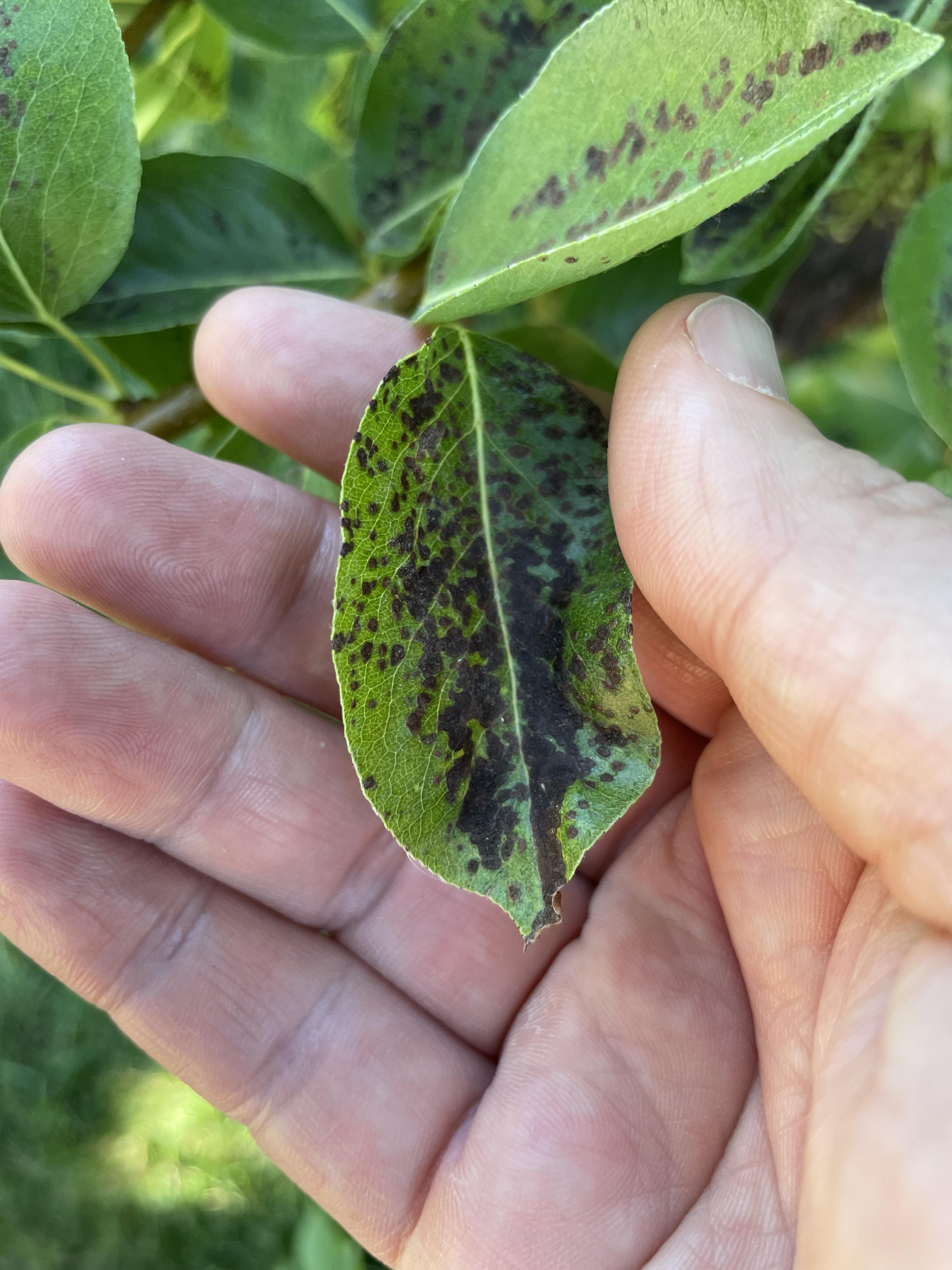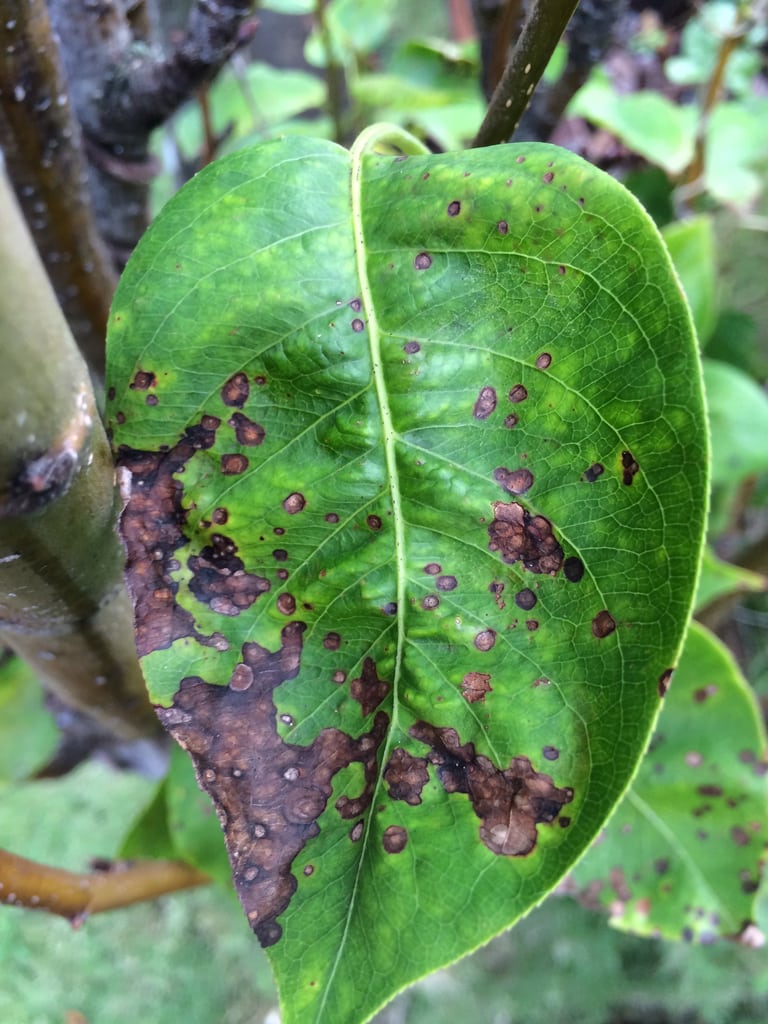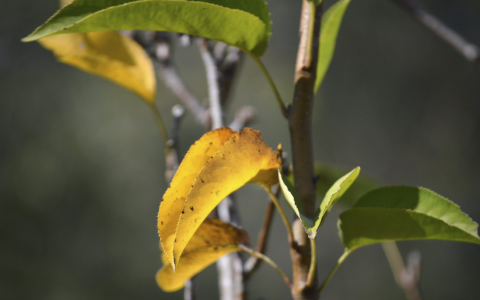Black Spots on Pear Tree Leaves: A Guide to Identification, Causes, and Solutions
Imagine waking up to find that your beloved pear tree, once the pride of your backyard, now shows signs of black spots marring its leaves. This sight isn’t just an aesthetic issue; it’s a warning sign, indicating that your tree might be under some form of distress. But what exactly are these black spots, and more importantly, how can you address them?

Understanding Black Spots on Pear Trees
Black spots on pear tree leaves can stem from various sources, but they are most commonly associated with diseases known as fire blight and pear scab. Fire blight, caused by the bacterium Erwinia amylovora, is notorious for its rapid spread and severe damage. It initially looks like burnt leaves, hence its name, and can affect flowers, fruit, and even small branches. On the other hand, pear scab, triggered by the fungus Venturia pirina, manifests as small, blackish spots on both the upper and lower leaf surfaces, often surrounded by a yellow halo.
Identifying the Culprit
To distinguish between these two diseases, look closely at the symptoms:
-
Fire Blight often starts at the blossom end of the tree, with leaves appearing scorched and branches bending into a characteristic ‘shepherd’s crook’. The infection can exude a smelly, amber-colored ooze.
-
Pear Scab shows up as isolated, round lesions that might merge into larger patches if not treated. Furthermore, this fungus can affect not just leaves but also twigs, fruit, and even petioles.
Causes and Spread
Both diseases thrive under particular conditions:

- Fire blight spreads through rain, insects, and pruning tools, often attacking when the tree is moist and temperatures range from 65°F to 86°F.
- Pear scab needs wet conditions to germinate, typically infecting during spring when leaves are new and tender.
Management Strategies
Don’t let these black spots spell doom for your pear tree. Here are several effective strategies:
-
Sanitation: Prune out all signs of fire blight immediately, burning or disposing of infected material away from healthy trees. For scab, remove and destroy affected leaves to reduce fungal spores.
-
Chemical Control: Apply copper sprays or streptomycin for fire blight management, but timing is crucial: post-flowering but before the next growth flush. For pear scab, treat with fungicides when the leaves are half-expanded and continue as needed based on weather conditions.
-
Cultural Practices: Improve air circulation around trees by pruning. Reducing leaf wetness through good irrigation practices can deter scab spores. Also, choose resistant pear varieties when planting new trees.
Preventive Measures
Prevention is better than cure. Here’s how you can keep your pear trees healthy:
-
Select and Plant: Opt for pear varieties with known resistance to these diseases. Consider nursery-bought seedlings as they are often grown under controlled conditions lessening the chances of diseases.

-
Mind Your Tools: Disinfect pruning tools between cuts or between trees to prevent accidental spread.
-
Monitor and Act: Regularly inspect your trees, looking out for early signs of issues, enabling proactive intervention.
Looking Ahead
While black spots might seem like the end for your pear tree, with proper diagnosis, timely management, and forward-thinking prevention, your orchard can not only survive but thrive. Knowing the distinction between fire blight and pear scab, understanding their lifecycle, and applying the right strategies at the correct times, you’ll be well on your path to maintaining your pear tree’s health. Remember, the key lies in vigilance, taking prompt action, and fostering conditions that deter disease spread. Such attentive care will ensure your pear tree continues to bless you with its delicious fruits and verdant beauty season after season.



